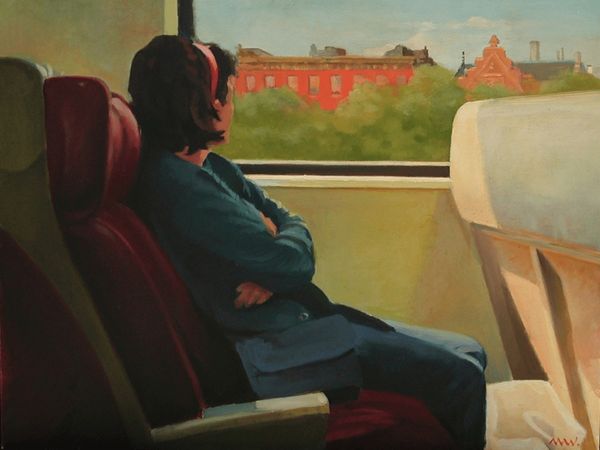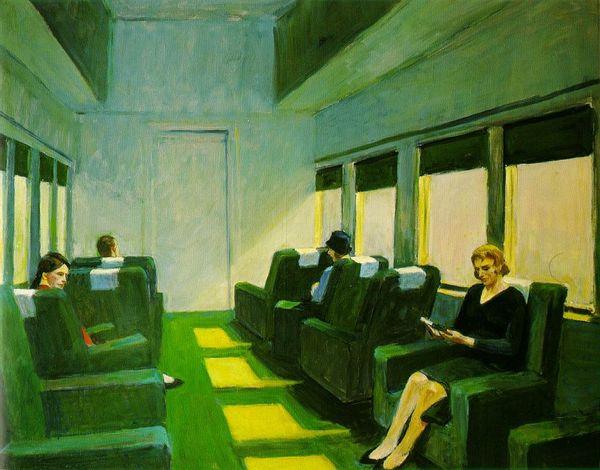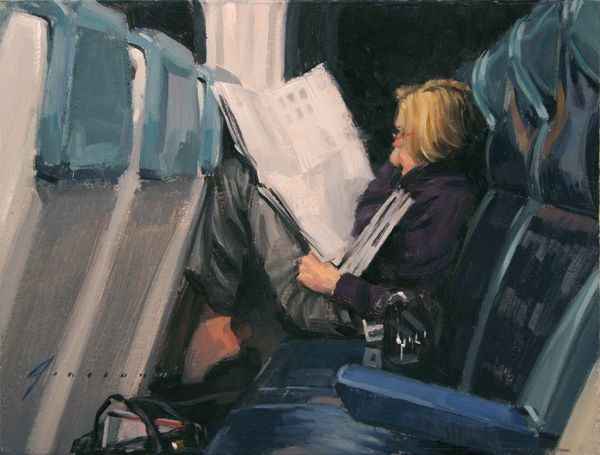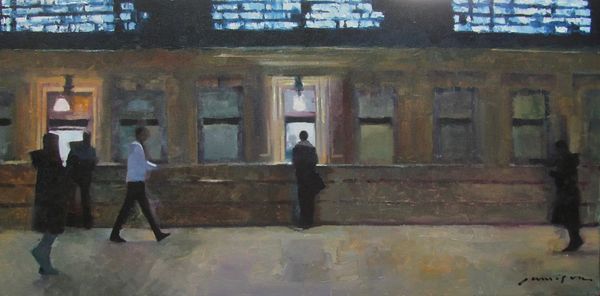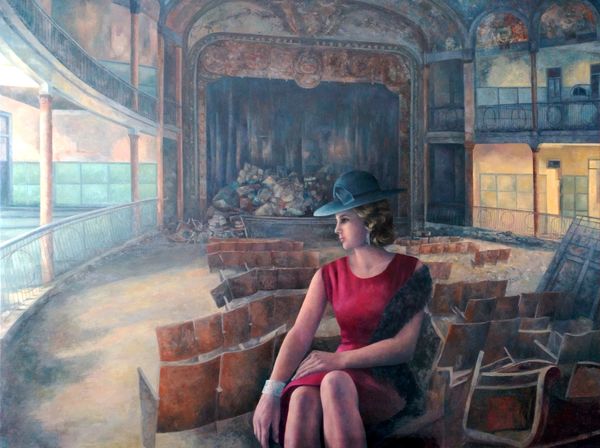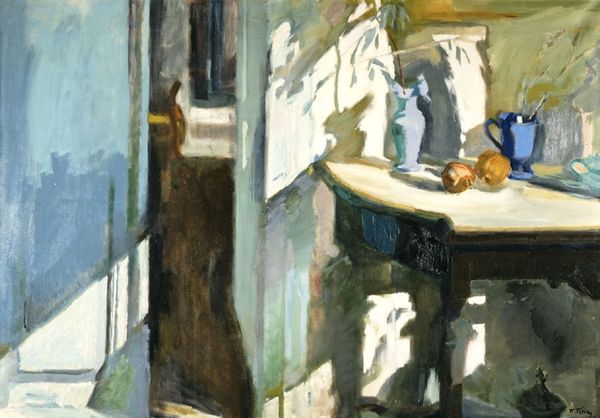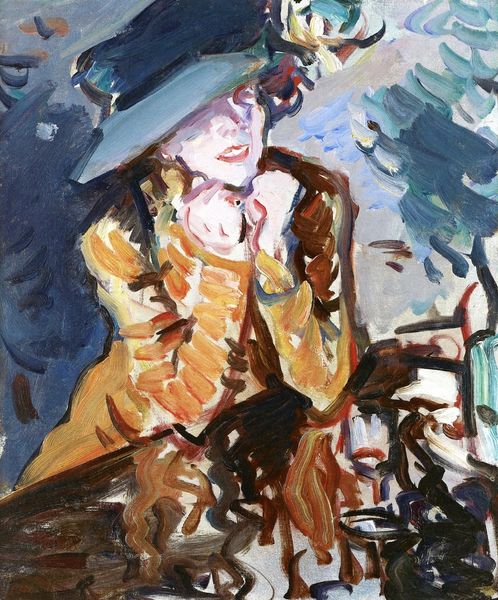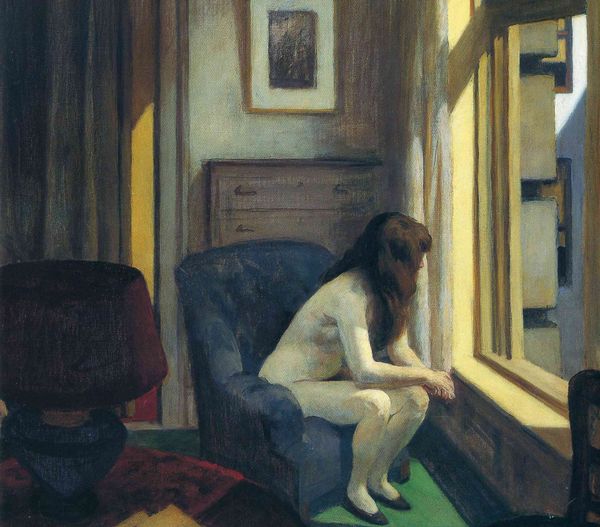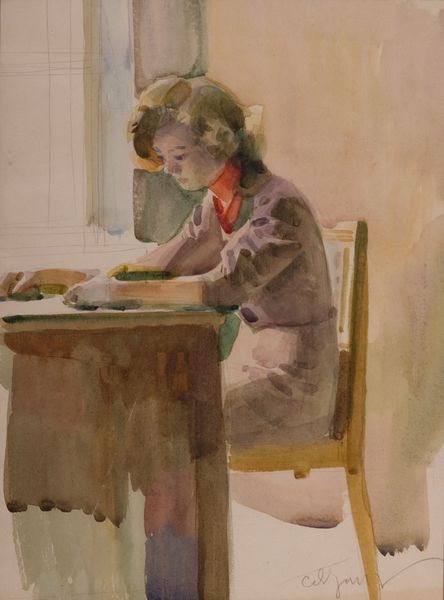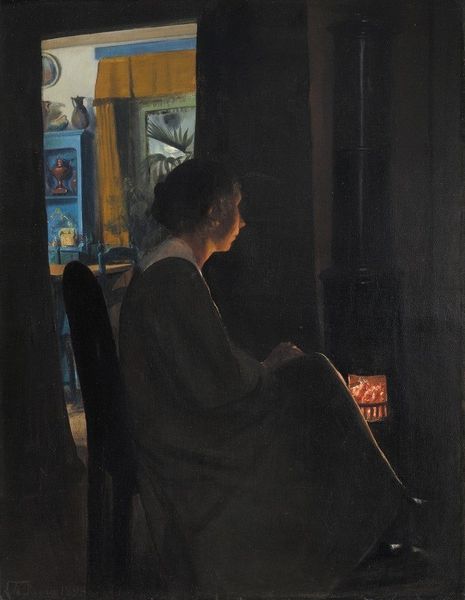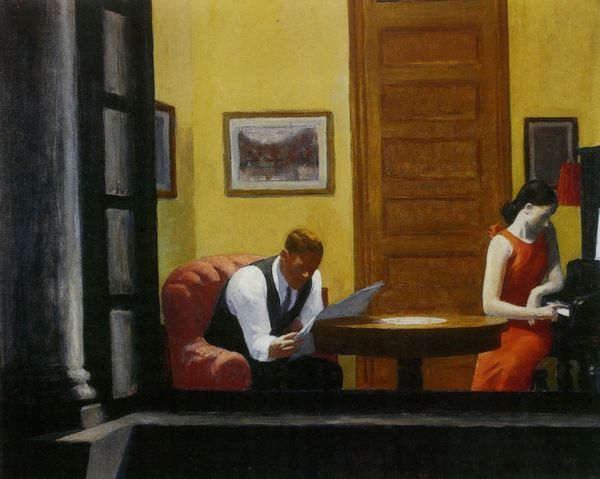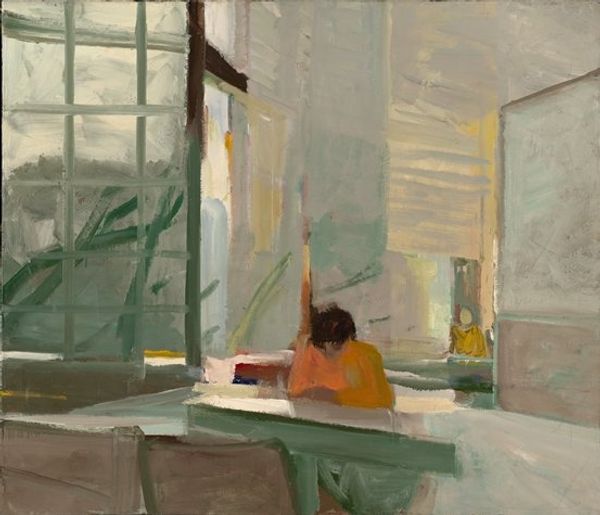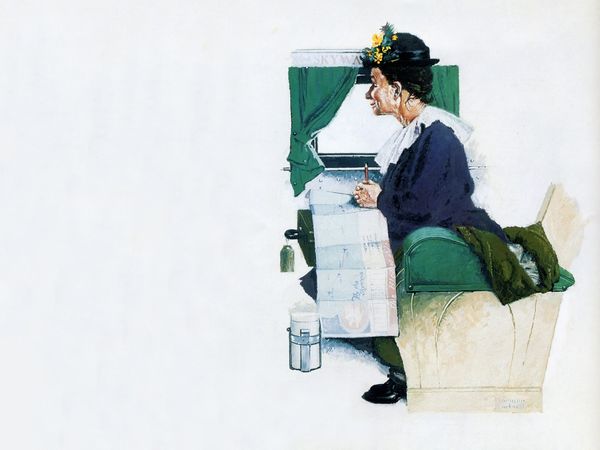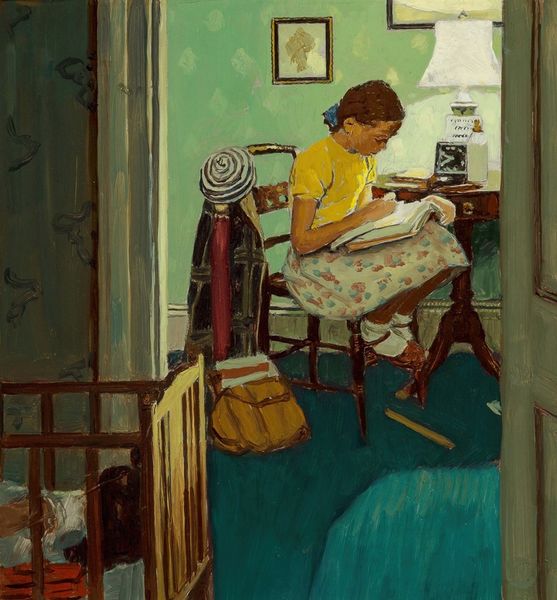
painting, oil-paint
#
portrait
#
painting
#
oil-paint
#
oil painting
#
portrait reference
#
cityscape
#
genre-painting
#
modernism
#
realism
Copyright: Edward Hopper,Fair Use
Curator: Edward Hopper's "Compartment Car," painted in 1938, presents us with a scene of modern transit rendered in oil paint. Editor: The subdued green palette immediately strikes me—it's almost as if the interior itself is exhaling a sigh of weary travel. Curator: Indeed, the subdued colors create a contemplative mood. Hopper's work often examines themes of isolation and alienation within modern life, reflecting the anxieties of a rapidly changing society, particularly during the pre-war period. Consider how the woman’s isolation within the confined space of the train compartment speaks to broader existential concerns. Editor: And the composition reinforces that sense of enclosure. Notice how Hopper uses the geometry of the compartment – the sharp angles of the walls, the window frame – to create a visual cage around her. There's a beautiful tension between the implied movement of the train and her static posture. Curator: I agree, there is tension there, however I would also argue that Hopper’s inclusion of a lone woman adds a layer of feminist discourse, hinting at the evolving role of women navigating public spaces. She's self-possessed but also undeniably alone, embodying the paradox of modern womanhood. Editor: From a purely formal perspective, it's fascinating how Hopper plays with light and shadow. The soft light illuminating her face contrasts sharply with the dark void beyond the window. Curator: Absolutely. Considering that in 1938, American society was still grappling with economic depression, a lone female is now having an isolated moment, alone in the confines of this public space, a true contrast from that time and a great historical view of this era. Editor: It's a remarkable, thought-provoking study in lines and lights, even before we layer in historical or social readings. Curator: Precisely, and that's what makes Hopper so enduring – he invites endless interpretations, reflecting both the beauty and the discomfort of the modern world. Editor: Ultimately, the artwork makes a point about loneliness using tone, which only a keen-eyed observer could convey.
Comments
No comments
Be the first to comment and join the conversation on the ultimate creative platform.
